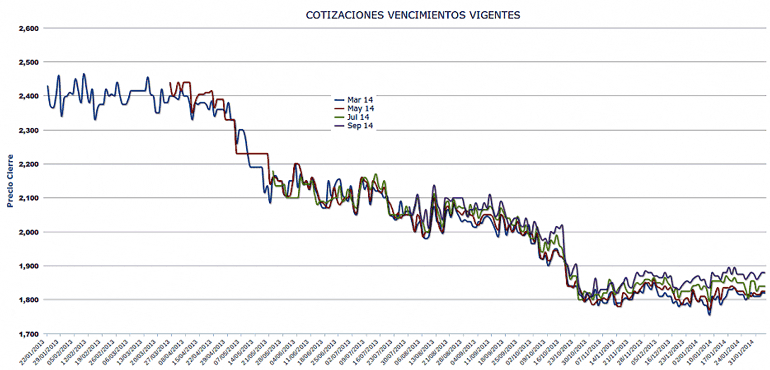
The decade-old Olive Oil Futures Market made its second profit ever — nearly €43,800 ($59,260) — last year, largely thanks to increased price volatility.
Nearly 111,000 contracts were traded in the market (MFAO for its initials in Spanish), up 13,000 on 2012 and 34,000 on 2011.
Manuel León, president of the Jaén-based market, told Olive Oil Times higher price volatility last season saw an increase in MFAO clients and trading as people sought to hedge against ex-mill price changes.
Low stocks and prospect of small Spanish harvest fueled trade
Trade increased since July 2012 amid the prospect of the then coming Spanish harvest being reduced and causing price volatility, he said. “Other big factors were the uncertainty about the adequacy of olive oil stocks, declining domestic demand (for the first time during the financial crisis) and also a lower volume of exports from Spain,” León said.
“Our clients have used the market to help eliminate pricing risk and to be able to buy and sell with security and the guarantee of adherence to deals that we provide for the olive oil sector,” he said.

Need for greater liquidity
In November, Deoleo CEO Jaime Carbó said the olive oil giant tended not to use the MFAO, “because there is not enough liquidity in it,” instead locking in contracts to provide physical hedging.
Asked his response, León said last year contracts worth €265 million ($360m) were negotiated in the MFAO, representing 18 percent of Spanish olive oil production that season. “It is true our aim is to achieve greater market penetration, increasing trading volumes and thus liquidity.” The MFAO was founded with the objective of being a useful tool for the olive oil sector, and to improve its client service and market share every year. It also provided an important service as a price observatory, he said.
The only market in the world where futures contracts on olive oil can be traded, the MFAO opened in February 2004 and made its first profit, €116,000, in 2010, but 2011’s flatline prices — reducing the need for buyers or sellers to hedge against price swings — sent it back into the red with a €300,000 loss, followed by a €213,000 deficit in 2012.
MFAO converting into a multilateral trading system
Last year it announced that this September it will cease operating as a secondary market and instead be a multilateral trading system (known in the United States as an alternative trading system). The MFAO said tighter European Union regulations on secondary markets — aimed at safeguarding stability in financial markets in the wake of the financial crisis — had imposed various capital and other requirements that largely exceeded its means “and probably also its needs.”
